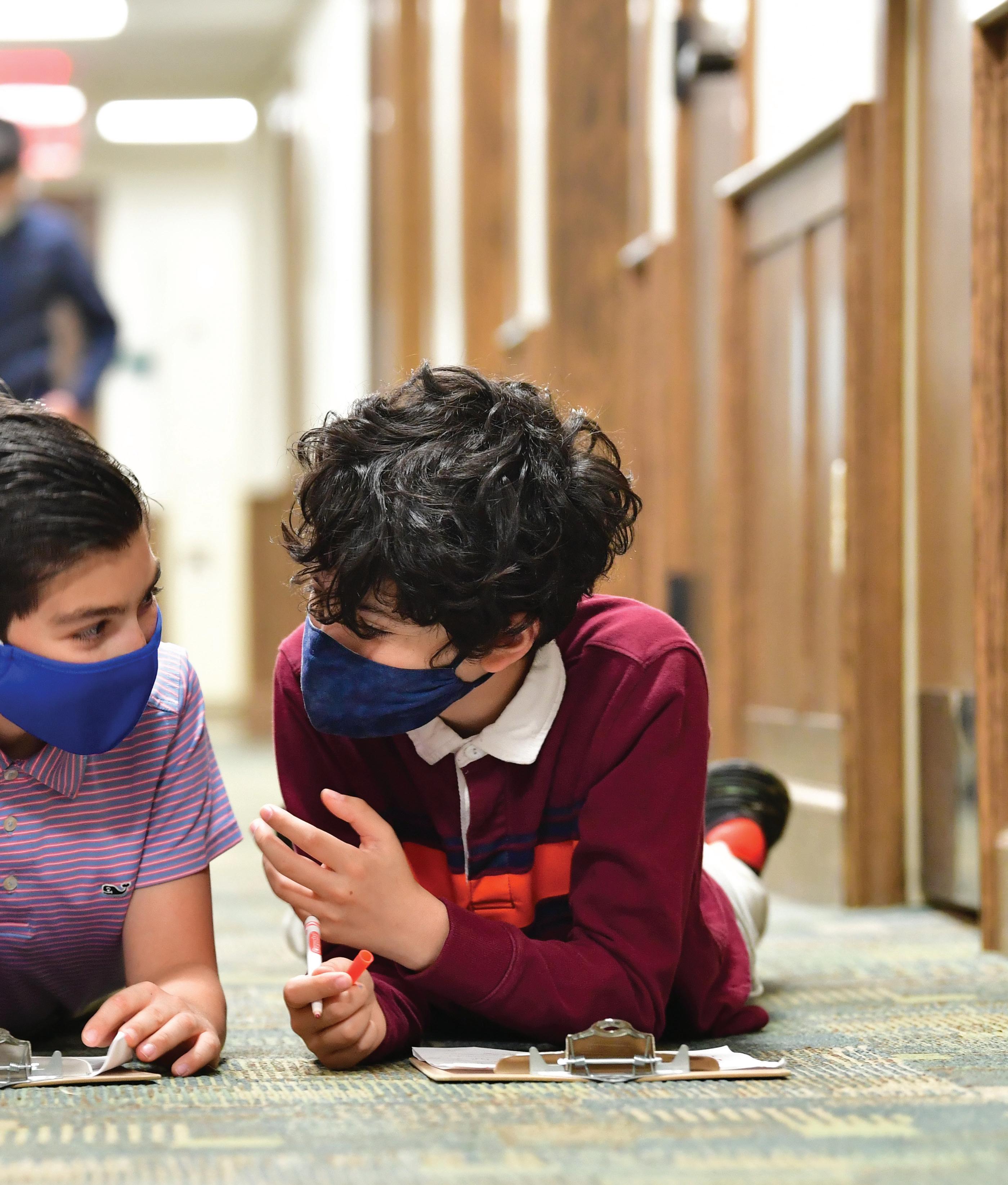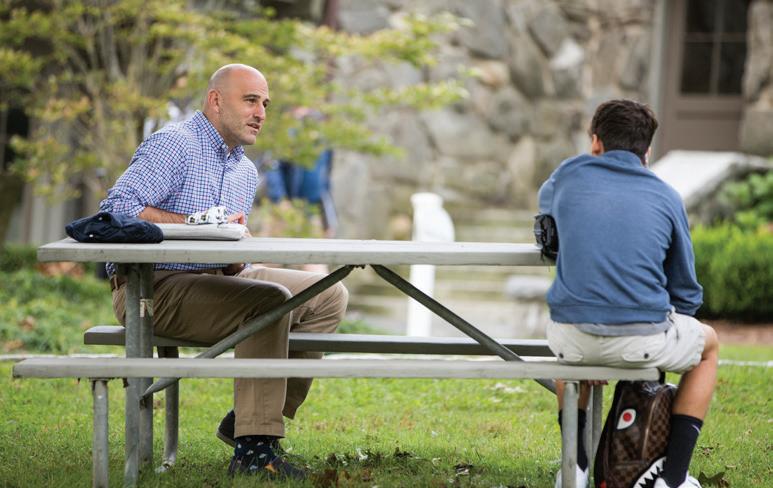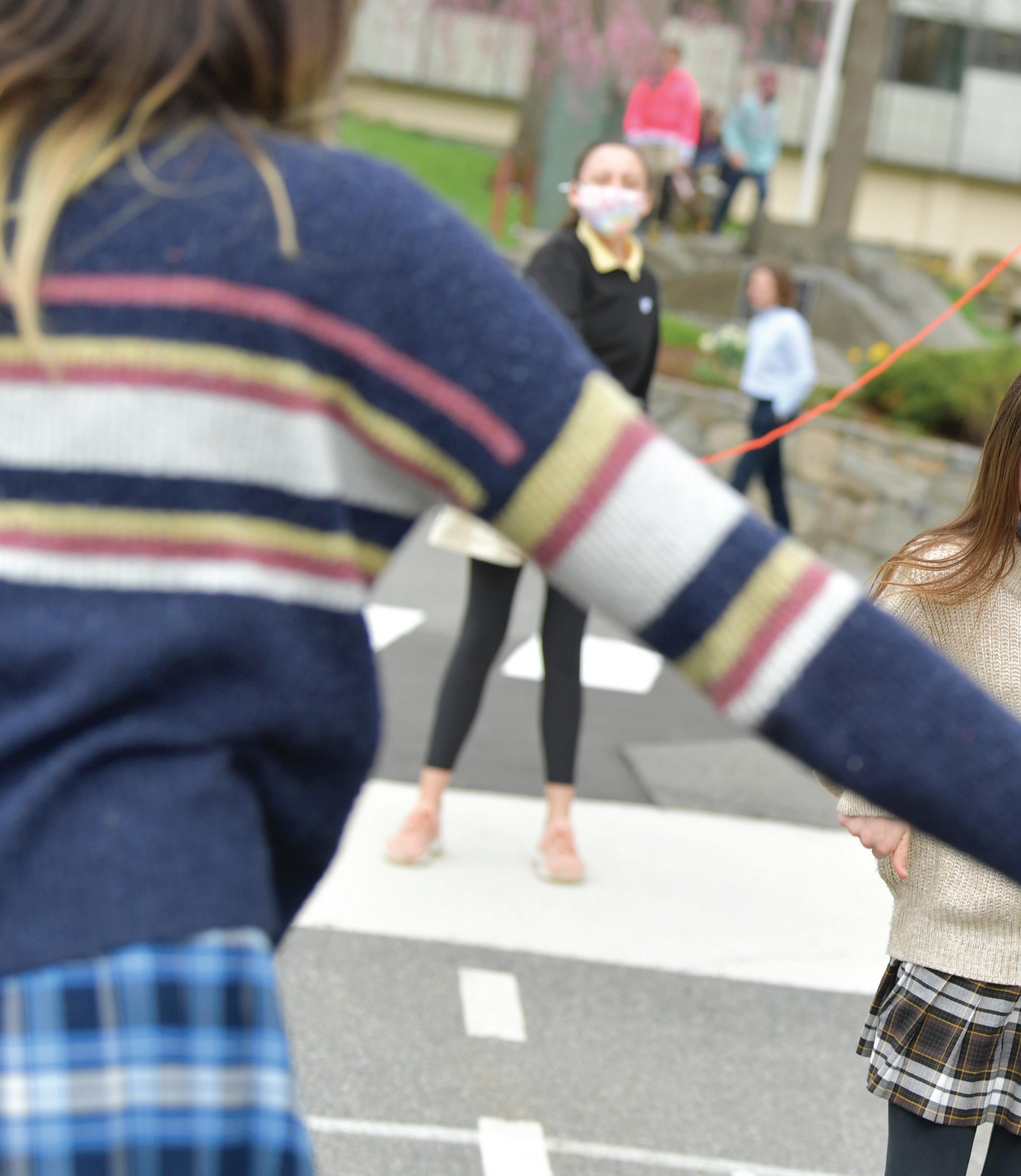
5 minute read
SOCIAL-EMOTIONAL LEARNING
SocialEmotional Learning
Keeping Students Connected, Even When Physically Apart
Advertisement
by JENN HARKINS
Head of Upper School & SHARI BLOOMER
Head of Lower School
With the excitement of returning to campus this fall after many months away, we knew there would be many hurdles for our students. Due to CDC and Health Department guidelines, students and teachers would need to be divided into cohorts and desks would need to be placed six feet apart.

Both of these requirements could possibly impact flourishing friendships. Trusted, beloved teachers might be out of sight to some students due to cohort configurations. Mask wearing and social distancing would need to be part of normal everyday practice. Casual socialization with friends in the dining hall, during field hockey practice, or on the way to a soccer game would not be possible. Of course, the biggest hurdle of all would be the acceptance that our students’ sense of normalcy had been altered without a clear timeline for its return.
We met daily with our colleagues throughout the summer to plan for this school year. We were guided by three goals; • continue to provide the best educational program for our students; • create an environment for students to learn in that adhered to best safety protocols and practices; • ensure that the social-emotional needs of all our students were being addressed.
Upon returning to school after a spring of being remote, we knew our students would benefit greatly from in-person learning that provided them with structure and routines. We felt confident that their ability to adapt to the new norms of social distancing, mask-wearing, and separating by cohort would come over time, but we wanted to ensure that each student had the support needed to make this transition as successfully as possible. Dr. David Blank, Director of Psychological Services, spearheaded the call for EHS to create a safe and supportive environment for students to feel empowered to discuss the impact of the new way of life in a COVID world, and to set a goal of creating a connection between each student and someone in the Psychological Services Department. Dr. Blank shared, “When needing to shift to distance learning last March, one of our biggest challenges was providing support to those students and families that we did not have pre-existing relationships with.” In speaking about his vision for the 2020-21 school year, Dr. Blank explained, “Most importantly we wanted to accomplish giving a voice to things that were happening outside of the classroom. From this, our EHS Social Emotional Learning Program started taking form.”
What is Social-Emotional Learning? Social and emotional learning (SEL) is the way that both students and adults learn and practice the knowledge, attitudes, and skills necessary to: understand and manage emotions, set and achieve positive goals, feel and show empathy for others, establish and maintain positive relationships, and make responsible decisions.
Bi-weekly sessions were created for SEL student groups and led by a member of David’s team. An assessment period was established at the beginning of the year to discover how the students were doing, if they were making sense of what was going on in the world, how they were managing it personally, and to get a sense of what questions they had.
Over time the session focus shifted to specific topics. Although some of the discussions start with the introduction of a topic, the conversation can be led in a different direction by the students and what is on their minds. This format gives David and his team the freedom to address a host of issues and provide our students with a voice to so many issues going on around them.

Within these groups a range of topics will be covered including, but not limited to: • Coping with Covid • Coping and adaptation to distance learning • Empathy • Self-Awareness and Self-Advocacy • Differences and Diversity • Friendships (how to build relationships and keep relationships in a socially distanced world) • Racial inequality • Social Justice • Social Media Awareness and Behavior
Given the range in ages of our students, the topics and the depth of the discussions vary from cohort to cohort. Some of our younger Lower School students, for example, might focus their conversations on friendships, celebrating differences, and acceptance of others, while Upper School students may be more prepared to bring in current events from the news and discuss racial inequality and social justice in a more nuanced way.
Of the many silver linings of this year, the SEL groups are close to the top of our list. Students have learned to be curious, not judgmental. Strong connections have been made between our students, Dr. Blank, and all the members of our Psychological Services Team. Those connections allow us – the divisional educational teams – to have greater insight into ALL of our students and how they are handling the changes that this school year has brought.


The Collaborative for Academic Social and Emotional Learning (CASEL) has identified five core SEL competencies:
1 2 3 4 5
SELF-AWARENESS:
The ability to accurately recognize one’s emotions and thoughts and their influence on behavior. This includes accurately assessing one’s strengths and challenges and possessing a well-grounded sense of confidence and optimism.
SELF-MANAGEMENT:
The ability to regulate one’s emotions, thoughts, and behaviors effectively in different situations. This includes managing stress, controlling impulses, motivating oneself, and setting and working toward achieving personal and academic goals.
SOCIAL-AWARENESS:
The ability to take the perspective of and empathize with others from diverse backgrounds and cultures, to understand social and ethical norms for behavior, and to recognize family, school, and community resources and supports.
RELATIONSHIP
SKILLS: The ability to establish and maintain healthy and rewarding relationships with diverse individuals and groups. This includes communicating clearly, listening actively, cooperating, resisting inappropriate social pressure, negotiating conflict constructively, and seeking and offering help when needed.
RESPONSIBLE DECI-
SION MAKING: The ability to make constructive and respectful choices about personal behavior and social interactions based on consideration of ethical standards, safety concerns, social norms, the realistic evaluation of consequences of various actions, and the well-being of self and others.
“I have to say that this is the best school I have ever been to in my life. Every teacher genuinely cares about every student. I love Eagle Hill.
Before I went here I could not write a paragraph – I am dyslexic,
I have ADHD, and I have dysgraphia (which makes it hard to write on paper). This school has helped me and so many other kids in ways that I never thought were possible.
Without Eagle Hill I would not be here writing this right now.”

CURRENT UPPER SCHOOL STUDENT





